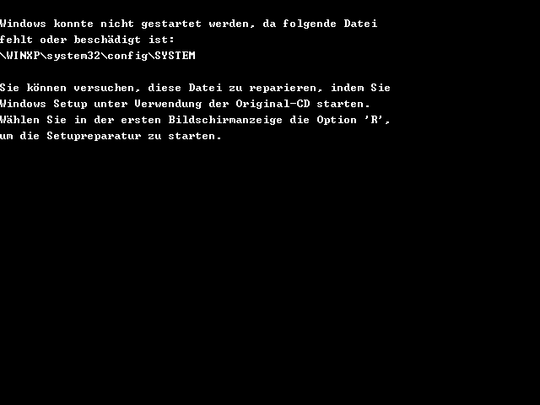Windows stores a lot of critical information in the registry, which is loaded (at least a part of it) during an early stage while booting. If you remove this information Windows will be unable to find and load critical system files and thus be unable to boot.
Such critical information is e.g. the list of device drivers needed for booting the system. This may include:
- disk drivers (floppies, hard disks, CDs, USB-devices, ...)
- bus drivers (IDE, SATA AHCI, ...)
- file system drivers (FAT, NTFS, ...)
- ...
However, by default Windows stores a backup copy of the registry. If you've enabled "System Restore" you can find such copies in the (hidden) System Volume Information Folder inside the root folder of the system partition. Additionally, even if you do not have "System Restore" enabled, Windows saves a backup copy of the registry in %WINDIR%\System32\config\RegBack\.
You can manually copy the backup files into %WINDIR%\System32\config\ to restore the registry data.

Well, nothing happened. Command completed successfully though. So nothing changed, lol :-) Edit: Ofc. i rebooted it. – Haplo – 2014-10-25T19:33:30.933
open regedit post a screen grab... then reboot it ..... – Logman – 2014-10-25T19:34:00.707
Before Reboot It's in Turkish but it says command completed. And after reboot. – Haplo – 2014-10-25T19:41:40.447
How mutch time did it take to delete it? and what changes after reboot? when u opened regedit after rebood was it still empty? – SkYWAGz – 2014-10-25T19:44:46.750
Like i said nothing changed. Registry keys was not deleted and command completed immediately. So, like i said you can't do something like this. – Haplo – 2014-10-25T19:47:34.593
Can you try it but this time run the batch file as administrator? Cuz i tried it on my pc and it said "Command completed successfully" without deleting anything. – SkYWAGz – 2014-10-25T19:58:11.517
As you can see in first image, i already ran it as administrator – Haplo – 2014-10-25T20:09:12.130
On my machine, I get "Invalid key name." error for every line of the batch file. – Little Helper – 2014-10-25T20:09:48.850
@LittleHelper cause you should remove \ at the end of line. – Haplo – 2014-10-25T20:10:56.220
@Haplo Try deleting files directly from regedit – SkYWAGz – 2014-10-25T20:13:02.553
OKay, now it shows "The operation completed successfully." like for every one else. – Little Helper – 2014-10-25T20:13:11.550
@SkYWAGz It's greyed out.
– Haplo – 2014-10-25T20:15:42.223This isn't a discussion forum. Please grab yourselves a chat room in our [chat], or post an answer showing the results if they're any different. Thanks. – slhck – 2014-10-26T09:14:49.187